OCE Competitive Challenges: Key Issues, Players, and Global Impact
Updated On: August 23, 2025 by Aaron Connolly
Understanding OCE Competitive Challenges
OCE faces some pretty unique hurdles, mostly thanks to geographical isolation, a smaller server population, and awkward timing with global tournaments.
These problems throw up real barriers for players who want to break into international esports and stunt the region’s competitive growth.
Defining Competitive Challenges in OCE
OCE’s biggest competitive headaches come from geographical isolation and market size limitations.
The region sits awkwardly between massive esports markets like North America and Europe, so OCE teams get hit with timezone disadvantages for international play.
Distance throws up a bunch of obstacles:
- Players get high ping when connecting to international servers.
- Teams can’t practice much against top global squads.
- Travel costs for big tournaments can shoot past £3,000 per player.
Market size holds back growth:
- Sponsorship pools are tiny compared to EU or NA.
- Players find fewer pro opportunities.
- Local tournament prize money barely moves the needle.
Pro teams in OCE struggle to keep full-time rosters together. A lot of OCE pros juggle part-time jobs while competing, which just drains talent—top players end up moving overseas for better prospects.
Timezone problems hit games like CS2 and Valorant especially hard. When European tournaments run during their prime hours, OCE players find themselves competing at 2-4 AM.
Key Issues Facing OCE Esports
Server population is still the biggest technical headache. Off-peak hours? Players can wait over 10 minutes just to find a match. That hurts practice quality and makes people give up.
A smaller player base means a lower skill ceiling. Once players hit the top tier in OCE, there’s barely anyone left to challenge them. Many pros talk about hitting a “skill wall” that only international competition can break.
Infrastructure issues keep popping up:
- Not enough local tournament organizers.
- Fewer coaches than other regions.
- Streaming and content creation support just isn’t there.
Financial struggles hit everyone. Entry-level tournament prize pools rarely go over £500, so new players can’t justify putting in the hours. Pro salaries lag far behind what’s normal elsewhere.
All these things mess with the talent pipeline. Promising players often quit chasing competitive dreams because the career path just isn’t there. OCE ends up losing its best talent before they can make a real impact.
The Role of Server Population
Server population shapes match quality and availability in OCE.
During peak times, things are okay, but late-night or early morning sessions? Forget it—serious practice just isn’t possible.
Different games feel the pinch in different ways:
| Game | Peak Population | Off-Peak Issues |
|---|---|---|
| CS2 | 8,000-12,000 | 15+ min queues |
| Valorant | 15,000-20,000 | Skill mismatches |
| League of Legends | 25,000+ | Manageable |
Small player pools mess with competitive integrity. Players end up facing the same opponents over and over, which makes strategies predictable and the meta stale.
Queue times bounce all over the place. Pro teams can’t set consistent scrim schedules because finding opponents is a crapshoot during certain hours.
Lots of OCE players just jump onto higher-ping international servers when local queues dry up. Sure, they get more games, but the bad connections hold back real skill development.
Smurfing gets worse in smaller populations. Top players create new accounts for faster queues or easier matches, which ruins the experience for newcomers and hurts the ecosystem.
Challenger Spot Distribution Issues
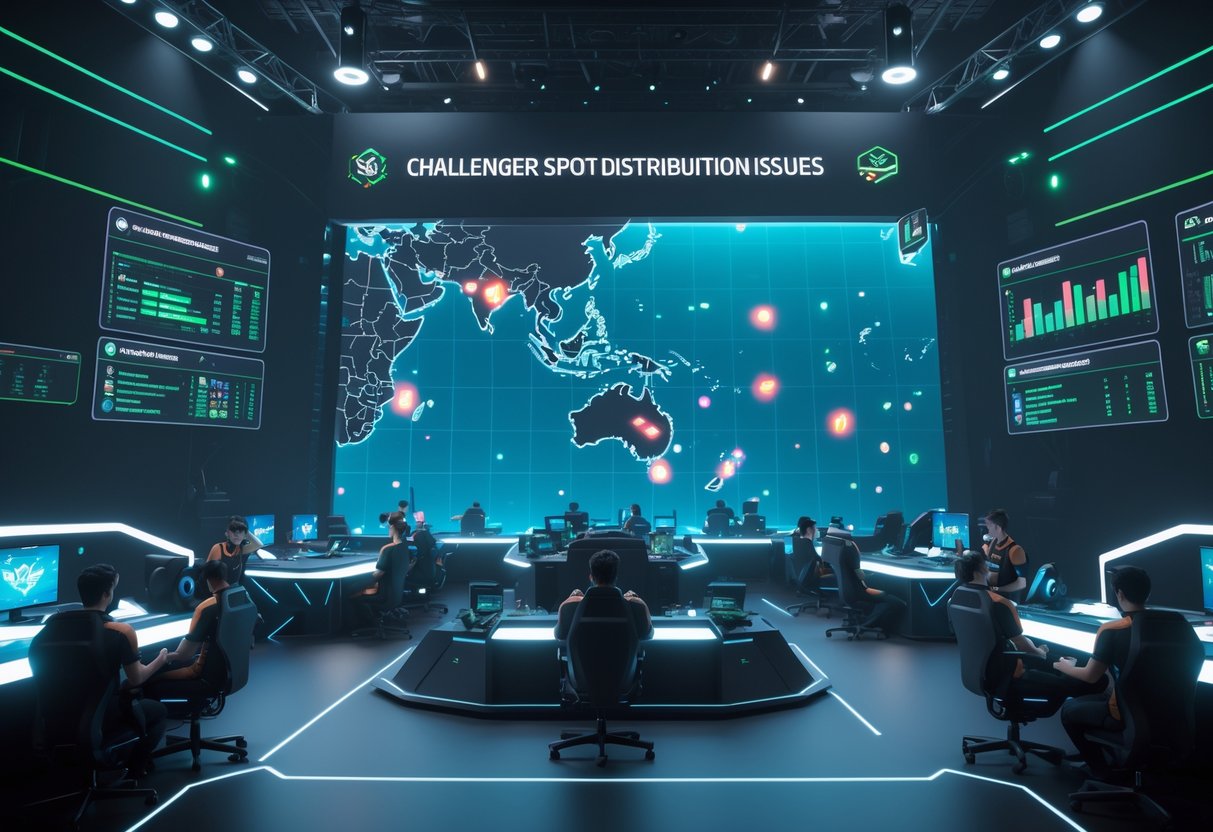
Right now, OCE’s challenger ranking system is a bit of a mess and it’s dragging down competitive play. There are way too many challenger spots for the actual number of players, so the top ranks feel less special. Talented players end up looking elsewhere.
The Challenger-to-Player Ratio Problem
OCE offers 100 challenger spots, but near the end of the season, only 67 are actually filled. You can hit challenger with just 500 LP—that’s way too low for what’s supposed to be an elite rank.
OCE has the lowest player-to-challenger slot ratio in the world. There’s just not enough activity to justify so many top-tier spots.
This started back in Set 4, when OCE doubled challenger spots from 50 to 100. At the time, lots of overseas players from SEA, China, and India played on OCE via mobile.
But now those regions have their own servers and mobile apps. The OCE player base has shrunk, but the challenger spots stayed the same.
Effects on Prestige and Motivation
Earning challenger should feel massive, but in OCE it’s kind of routine. More and more top players jump to other servers, where challenger rank actually means something.
When challenger is easy to get, players lose the drive to grind and improve. The competitive edge just isn’t there.
We’re losing our best talent to other regions because OCE challenger doesn’t carry weight anymore. Players who could really put OCE on the map are taking their skills elsewhere.
That just leaves fewer strong players behind, which makes the top ranks even less meaningful.
Comparative Analysis with LAN and LAS
LAN and LAS regions only have 30 challenger spots each—even though they have way more players than OCE. OCE’s system is just out of whack.
These regions keep their top ranks tough to reach. Players really need skill and dedication to hit challenger, which keeps things competitive.
Dropping OCE’s spots to 50 or even 30 would make sense given the current player numbers. The top OCE player has even suggested this would help the region in the long run.
Other regions show that fewer challenger spots actually boost competition and give talented players a real chance to shine.
Impacts on Player Experience in OCE
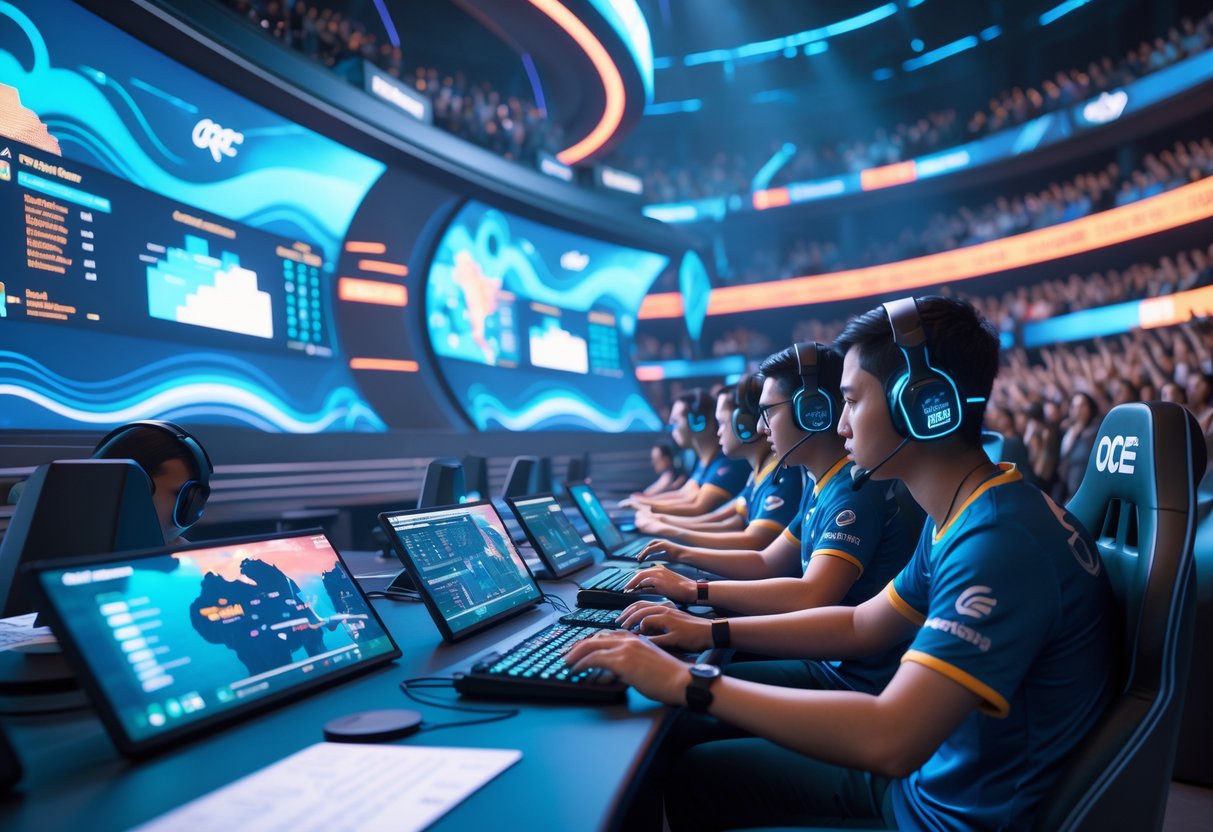
The shrinking competitive scene across OCE throws up big barriers for anyone trying to play ranked. Long queue times and a lack of high-level matches force players to make tough choices about their gaming future.
Migration to Other Regions
OCE players keep turning to NA, EU, and SEA servers when local competitive options dry up. But moving regions brings its own frustrations.
Latency is a killer. When OCE players join NA-led groups, the lag makes real competition impossible. NA players have the same problem when they try to play on OCE servers.
Players often label their groups as “OCE only” just to dodge these connection issues. That just splits up an already small player base even more.
Time zones don’t help either. OCE peak hours don’t match up with NA or EU, so OCE players end up playing during off-peak times on other servers, which means worse matches.
Higher-ranked players get hit hardest by all this. With only 20,000 people in ranked across OCE, finding games above Platinum is rough. Some players say they’re “stuck in gold” just because they can’t get enough ranked games to move up.
Barriers for Aspiring Competitors
New players face a tough road trying to break into OCE’s competitive scene. The shrinking player pool makes skill development a grind.
Practice opportunities are scarce. With so few active players, matchmaking can’t balance games well. Newbies often get thrown against much better opponents, which is just demoralizing.
Queue times for some ranks are just brutal. Players report waiting 15-20 minutes for a match, only to end up in lopsided games.
Smurfing and alt accounts make things worse. Some suggest raising level requirements for competitive play, but that’s a catch-22—new players need more games to level up, but can’t get good matches to improve.
There’s no clear pathway into competitive play either. Big names like Fresh and x2Twins have moved on to content creation, so new players don’t have many role models to look up to.
Community Sentiments
OCE gaming communities are getting pretty fed up with the state of competitive play. Feedback shows a lot of frustration across different games and skill levels.
“People actually had enough” comes up a lot, especially after technical issues like the post-skin cup bugs that broke gameplay. That’s pushed many away from ranked modes.
The community sees OCE competitive gaming as unsustainable now. Someone even said, “PWR is the only one holding OCE’s comp scene for its dear life,” which shows how few orgs are still invested.
Some game modes still bring fun. Players say “OCE comp ballistic is fun as hell and we always have full lobbies” in certain games, so there’s hope when the tech and population issues get sorted.
But matchmaking complaints dominate the conversation. “I’m stuck gold because I can’t get ranked games” pops up everywhere, showing how broken the system feels.
Some players have switched to non-competitive modes for fun, but that just drains the ranked ecosystem even more.
Comparing OCE with International Scenes

OCE keeps struggling to keep up with regions like NA and EU, and even newer regions like SEA and MENA are showing better tournament results. OCE teams usually grab just 0-2 wins at big events, while top regions pick up 4-6 wins.
NA and EU Region Comparison
The gap between OCE and the big regions has only gotten wider lately. OCE teams like Wildcard went 0-3 in series, and TSM only managed 1-3, while EU and NA teams breeze through Swiss stages.
Performance differences stand out:
- OCE win rates: 10-20% at majors.
- EU/NA win rates: 60-75% in groups.
- Practice: EU teams get 15-20 big tournaments a year, OCE gets 4-5.
Practice quality is the main problem. EU players queue up against the world’s best every day, including MENA teams who use EU servers. OCE players just don’t have that level of competition.
NA teams have huge infrastructure and coaching support. Most OCE orgs run on a shoestring compared to the multi-million dollar setups in NA and EU.
SEA Participation and Influence
SEA regions have pulled ahead of OCE in competitive growth. MENA teams like Furia have even won major tournaments like Gamers8, and Team Secret keeps making it past groups.
MENA vs OCE:
- MENA: 2 teams advanced from Swiss stages.
- OCE: 0 teams advanced.
- Tournament wins: MENA grabbed 3 majors in 2024-2025.
Geography helps a lot here. MENA teams practice on EU servers against top-tier competition every day, so they improve faster.
SEA has also ramped up esports investment fast. Big orgs now sponsor SEA teams with pro coaching and training facilities that can compete with the best.
Global Representation at Major Events
OCE keeps two major tournament spots, even though the region hasn’t performed well lately. This decision has stirred up plenty of arguments about whether regional allocations are actually fair.
Plenty of folks in the community have floated the idea of changing the spot distribution to better reflect which regions are strongest.
Proposed major spot allocation:
- Current OCE spots: 2
- Suggested OCE spots: 1
- Additional MENA/SA spots: 2-3 combined
The issue goes deeper than just results on paper. OCE has a much smaller player base—maybe only a tenth the size of the big regions.
With fewer competitors at the top, it gets harder to find and nurture standout talent.
Some people worry that if OCE loses all its spots, the region’s whole competitive scene could collapse. Warning: Taking away major spots entirely might kill off the interest and infrastructure that took years to build.
Tournament organizers constantly juggle the need for global representation with the desire for top-tier competition. Keeping OCE in the mix helps the scene feel global, but it might come at the cost of higher-level play at the biggest events.
Competitive Intelligence in OCE Esports
OCE esports teams deal with some pretty unique obstacles when it comes to gathering competitive intelligence. With fewer players and tight budgets, they have to get creative.
Modern data analysis tools and smarter ways of gathering info are now a must if OCE teams want to keep up on the world stage.
Overview of CI Strategies
OCE teams usually rely on opponent analysis and meta adaptation as their main strategies. Since they don’t have many local scrim partners, they end up studying international games even more closely.
Most top OCE orgs hire dedicated analysts to track what competitors are doing in other regions. They really focus on understanding how APAC and global teams handle similar situations.
Key CI focuses in OCE include:
- Watching draft patterns from stronger regions
- Breaking down individual player habits
- Tracking meta changes before they hit OCE servers
Because money is tight, OCE squads often share analysts or resources to cover more ground. Several orgs will pool their analyst time just to make things work.
Regional tournaments don’t give them much data to work with. Teams have to lean heavily on international match analysis to fill the gaps.
Data Sources and Analysis for OCE
OCE teams mainly use match replays, tournament VODs, and streams from rivals as their data sources. Since they rarely get access to private scrim data, they stick to what’s public.
International tournament footage is basically a goldmine for them. OCE analysts spend hours watching how top teams from outside the region pull off their strategies.
| Data Source | Accessibility | Value for OCE |
|---|---|---|
| Tournament VODs | High | Essential |
| Streaming replays | High | Moderate |
| Scrim leaks | Low | High |
| Statistical databases | Moderate | Moderate |
Social media monitoring has become a bigger deal lately. Players sometimes drop hints about their thinking in interviews or on casual streams.
OCE teams keep tabs on several international leagues at once. This helps them get a sense of the bigger picture, not just what’s happening at home.
Statistical analysis tools can highlight weaknesses that you might miss just watching the games.
Digital Tools Enhancing CI
Specialised esports analytics platforms have totally changed how OCE teams handle competitive intelligence. These platforms pull together data from all over and spit out insights teams can actually use.
OCE teams seem to like game-specific stat trackers and video analysis software. Most start out with free tools, then upgrade if they see real value.
Common tools in OCE include:
- Match history databases
- Video annotation software
- Statistical analysis platforms
- Social media monitoring tools
Cloud-based tools work especially well for teams spread across Australia and New Zealand. Analysts can instantly share their findings, no matter the time zone.
Warning: Some pricey CI platforms have features that OCE teams honestly don’t need.
Budget issues push teams to come up with their own solutions. A lot of them build custom spreadsheets or databases to track what matters to them.
Automated data collection makes life easier for short-staffed teams. They set up alerts for when rivals play or try out new strats.
Tournament Structures and Representation
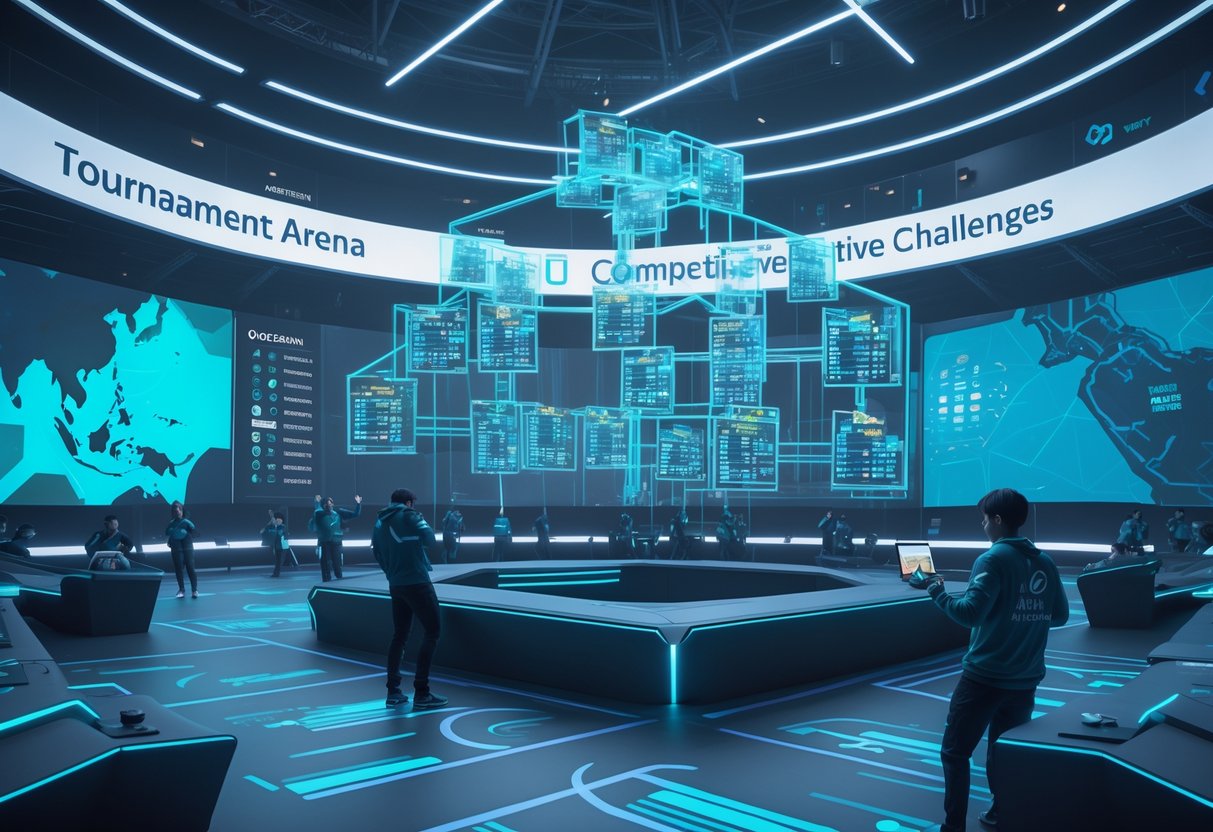
OCE has to deal with fewer local events and not many ways to qualify for big international competitions. The region’s tournament representation keeps coming up as a hot topic, especially when people question if the number of spots matches actual performance.
Regional Tournament Formats
OCE’s tournaments are just smaller—there’s no way around it. Most events use double elimination brackets and have pretty limited team pools.
Local Competition Structure:
- FNCS Oceania: Quarterly championships
- Community tournaments: Weekly online events
- LAN events: Only 4-5 a year since the pandemic
Geography doesn’t help either. Aussie and Kiwi teams get hit with high ping just playing each other online. That makes it tough to get good practice compared to regions where teams can scrim in person.
Format Limitations:
- Fewer players means less competitive depth
- Low prize pools make it hard to keep players invested
- Not many pro coaches available
Most OCE tournaments max out at 32-64 teams. In Europe, it’s not unusual to see over 200 teams in a single event.
World Event Qualification Challenges
Making it to international events is a huge hurdle for OCE teams. Usually, only 1-2 spots are up for grabs at the majors.
Qualification Barriers:
- Travel costs: Teams have to shell out $15,000-30,000 just to attend
- Visa issues: Paperwork delays can mess up prep time
- Few bootcamp options: Not many places to practice with proper setups
OCE squads usually show up to world events with barely any time to prepare. European teams might get weeks to bootcamp, but OCE teams are lucky to get two or three days.
Recent Performance Issues:
- Wildcard went 0-3 at the last majors
- TSM scraped just one win in four series
- Both teams looked outmatched internationally
The skill gap keeps growing because OCE players have to play on high-ping servers. Quite a few top players just move to Europe for better practice.
Controversies Around Major Spots
OCE’s share of major tournament spots has come under fire lately. Critics say the results just don’t back up the current level of representation.
Performance Concerns:
- OCE teams averaged 1-9 records at recent majors
- MENA teams like Furia have actually won big events
- Team Secret and Falcons consistently beat OCE squads
A lot of people now suggest a new breakdown: EU: 5, NA: 4, MENA: 3, SAM: 3, OCE: 1.
Arguments For Current System:
- Keeps competitions globally diverse
- Helps smaller scenes grow
- Stops OCE from vanishing altogether
Arguments For Reduction:
- The numbers just don’t justify it anymore
- Other regions are simply stronger right now
- OCE’s small player base limits improvement
Some industry folks say there’s a 70% chance OCE loses more spots if things don’t change. It’s a tough balance—should tournaments reward the best, or help developing regions survive?
Regulatory and Organisational Changes

OCE’s competitive scene keeps shifting as slot allocations and policies change. These adjustments impact how players qualify and compete across the whole region.
Adjustments in Slot Allocation
Recent tournaments have changed how OCE teams get into international events. The Valorant Champions Tour cut OCE down from two slots to one. Now, local teams have to fight even harder for a shot at the big stage.
This change forces teams to rethink how they prepare. Before, more than one OCE team could make it to majors. Now, only the very best gets through.
League of Legends still gives OCE a path through the Pacific Championship Series, but the slots mostly go to regions with more players. OCE teams have to prove themselves against tougher Asian competition.
Prize pools reflect these shifts, too. Fewer guaranteed spots mean less money for OCE orgs. Teams find it harder to keep strong rosters when international chances dry up.
| Game | Previous Slots | Current Slots | Impact |
|---|---|---|---|
| Valorant | 2 | 1 | 50% reduction |
| LoL | Direct path | Via Pacific | Increased competition |
Integration of New Policies
Tournament organizers now enforce stricter eligibility rules. Residency requirements mean players have to actually live in OCE for longer stretches. This stops teams from last-minute importing players from other regions.
Visa rules pile on more paperwork. International events want earlier applications and more documentation. OCE players often face longer waits than their European counterparts.
New anti-doping policies bring OCE in line with global standards. Players get tested at big events, and teams have to learn which supplements or substances are banned.
Salary cap talks are starting up across different games. While nothing’s set in stone yet, smaller orgs like the idea—it could even the playing field a bit.
Teams now have to do interviews in English. This standardizes things for media, but it might make life tougher for players who aren’t as comfortable with the language.
Regional Impact on Players
More OCE players are packing their bags and heading abroad for better opportunities. North American orgs offer bigger salaries and more tournaments, so the talent drain is real.
Those who stay behind feel the pressure. With fewer chances to compete internationally, every mistake matters more. Teams are paying more attention to mental health because the stakes are just that high.
Coaching infrastructure is changing, too. OCE orgs are investing more in analysts and support staff. Raw talent alone doesn’t cut it anymore when you’re up against the world.
Amateur pathways need a rethink. Right now, it’s tough for up-and-coming players to break into semi-pro. The current setup leaves a lot of talent stuck in limbo.
Money is getting tight for OCE orgs. With less tournament revenue, teams have to look elsewhere. Content creation and streaming partnerships are now key for survival.
The competitive calendar has to work around new rules. Teams have to juggle training with visa applications and eligibility checks. That means less time to actually practice before majors.
Growth and Decline Trends in OCE

OCE’s competitive scene has gone through some wild swings lately. Player numbers have dropped to just 20,000 in ranked, and a bunch of big content creators have bailed on competitive formats.
This has had a ripple effect on server stability and match quality.
Player Base Fluctuations
The competitive player base in OCE has dipped to worrying levels. Right now, only 20,000 players are active in ranked modes across the big titles.
That’s a huge drop from a few years ago. People complain about being “stuck in gold” because it’s nearly impossible to find ranked games outside solo queue. The frustration is pretty clear in forums.
What’s driving players away?
- Former stars like Fresh and x2Twins switched to content creation
- Technical issues after tournaments left players saying “people actually had enough”
- Hardly any matchmaking above Platinum rank
With the big names gone, there’s a real vacuum at the top. PWR is basically “holding OCE’s comp scene for its dear life” as one of the last orgs still putting in the effort.
Some alternative modes are catching on. People say “OCE comp ballistic is fun as hell and we always have full lobbies,” so there’s still some appetite for competitive play—if it’s supported.
Server Health over Time
OCE’s server infrastructure is feeling the pinch from fewer players. Queue times have shot up, especially for high-ranked matches.
Players above Platinum often can’t find games at all. That forces them into lower-skill lobbies or different modes. The matchmaking system just wasn’t built for such a small player base.
Current server headaches:
- Long queue times in ranked
- Skill mismatches thanks to tiny player pools
- Isolation from the bigger competitive scenes
After major tournaments, technical problems made things worse. Bugs and server issues kept a lot of players from enjoying the competitive experience.
Impact on Competitive Integrity
The shrinking player base has really hurt competitive integrity in OCE. With just 20,000 ranked players, skill-based matchmaking basically falls apart.
Lower-ranked players end up facing opponents way above their level. Higher-ranked players can’t find fair matches and either play against weaker opponents or just stop playing ranked.
This pushes more competitive players to leave, and the cycle keeps getting worse. The ladder doesn’t show real skill anymore when the matchmaking pool is this tiny.
Integrity concerns include:
- Unreliable skill-based matching
- Inflated or deflated rankings due to limited competition
- Less motivation to improve competitively
People are now debating OCE’s spots in major tournaments. Some critics openly wonder if the region deserves a place when “performance lags behind other regions” and so few people actually play.
Opportunities for Innovation and Improvement

OCE’s challenges are obvious, but they also open up new ways to grow. Teams can use better competitive intelligence, player engagement strategies, and international partnerships. A few smart organisations are already flipping these problems into advantages.
Leveraging CI for Strategy
Competitive intelligence changes the way OCE teams make decisions. We can use real-time data tools to track what teams in EU, NA, and SEA are doing.
The pharmaceutical industry actually shows how CI can work. Teams there gather market trends, check out competitor strategies, and figure out customer needs by collecting data.
For OCE, this means watching rival teams’ roster changes, training routines, and tournament strategies. We can also track social media buzz, sponsorships, and what fans are saying.
Key CI applications include:
- Player analytics across regions
- Sponsor investment tracking
- Fan engagement measurement
- Tournament format analysis
Regional differences are huge. EU teams love their structured training. NA pushes content creation and streaming. SEA leans into mobile gaming.
We need CI platforms that pull all this together. Tools should ping us when competitors announce roster changes or land big sponsors.
Boosting Player Engagement
Player engagement really drives OCE’s success, maybe even more than raw skill. We need to create more ways for audiences to stay invested, not just care about match scores.
Interactive content is a winner. Live Q&As, behind-the-scenes training, and player personality videos help fans connect. EU fans dig tactical breakdowns. NA loves personality-driven stuff. SEA is all about mobile-friendly short videos.
Engagement strategies that work:
- Weekly player spotlights
- Interactive training sessions
- Community challenges
- Regional fan meetups
Consistency across platforms matters. Players need to be on Twitch, YouTube, Twitter, and even Weibo in Asia.
We should watch engagement stats closely. Comments, shares, and watch time tell us what’s working. SEA fans act differently from Western ones.
Collaborative features help too. Fan voting on strategies, letting people help design merch, and having a say in tournament formats all make fans feel involved.
Potential for International Collaboration
International partnerships could unlock huge growth. EU, NA, and SEA all bring something different that OCE can use.
EU gives us structured training and strong coaching systems. Their academy programmes keep talent flowing. We could learn a lot from teams like Fnatic and G2 Esports.
NA is great at content creation and marketing. Their streaming and sponsor models rake in revenue. We could work together on joint content and cross-regional tournaments.
SEA knows mobile gaming and has fast-growing markets. Their experience with emerging economies and mobile-first fans could help OCE expand.
Ways to collaborate:
- Joint training camps
- Cross-regional tournaments
- Shared coaching resources
- Content exchange programmes
Language and time zones make things tricky. But strong partnerships focus on clear, specific goals.
We should start small. One tournament or a short player exchange can show if a partnership works before we go all in.
Revenue sharing needs careful thought. Each region brings something different and expects a fair return.
Future Prospects for OCE Competitive Scene
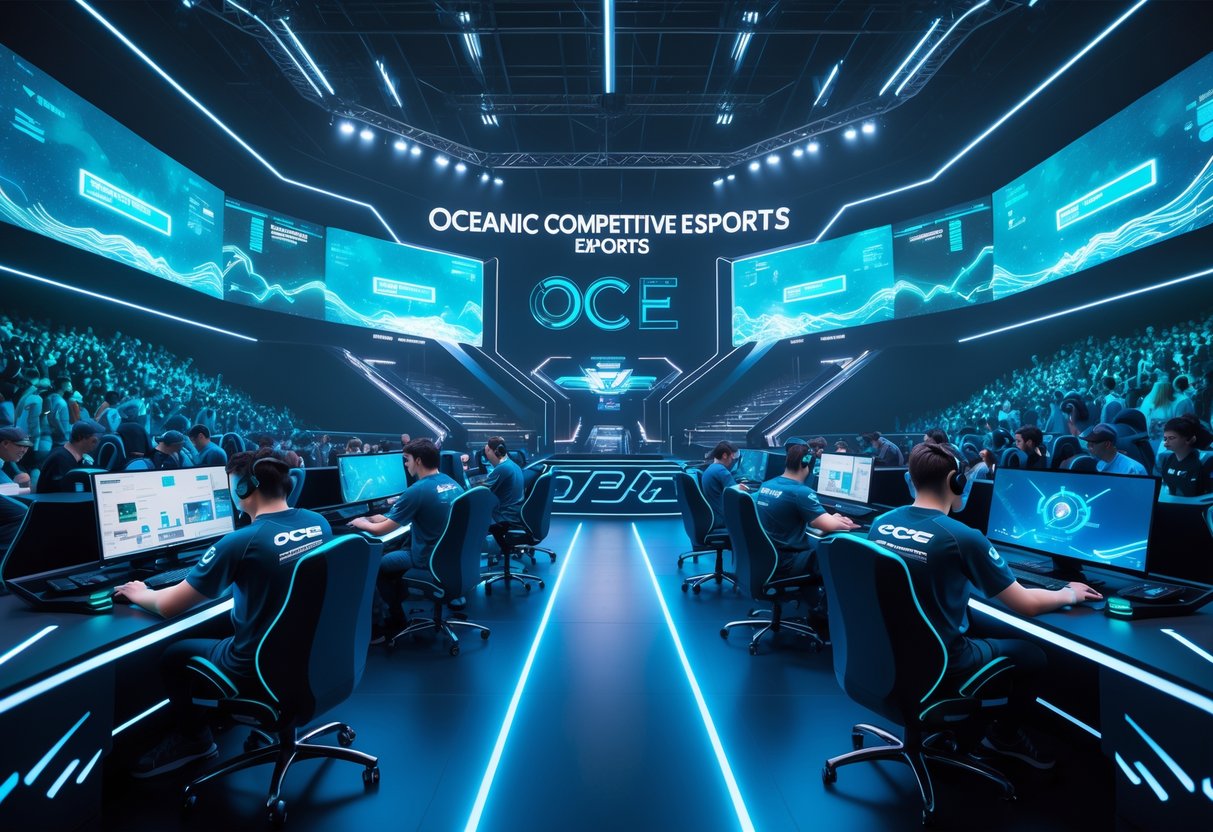
The OCE region is at a crossroads right now. Riot Games is exploring new competitive structures, and community leaders are pushing for real change.
Players and organisations want sustainable paths that can rebuild the scene’s reputation and actually create lasting opportunities.
Possible Reforms and Solutions
Riot Games is working on a new OCE competitive circuit that links directly to the APAC League system. This could finally give OCE players a clearer route to international competition.
The challenger rank system needs a fix. Most experts think OCE has too many challenger spots for its player base. Cutting some of these could make the ladder tougher and help top players stand out.
Community leaders have a few practical ideas:
- Bigger prize pools for local tournaments
- Stronger international league connections
- More grassroots competition support
- Investment in coaching and training programmes
Some organisations refuse to give up. Teams like Mindfreak believe OCE is about to grow and improve in a big way.
Long-Term Health of the Region
The region’s future hangs on building systems that keep players around. OCE has had a rough time with poor international results at events like MSI and Worlds, and it’s hurt the scene’s reputation.
Stable paths to pro gaming are a must. Right now, many talented OCE players head overseas because they just can’t find enough opportunities at home.
Key factors for long-term success:
- Reliable tournament schedules
- Financial support for teams and players
- Better training infrastructure
- Stronger ties to international circuits
APAC integration might be the answer. If OCE connects to a bigger competitive scene, players get more chances to prove themselves.
Hopes from Players and Community
OCE players want clear progression paths that don’t mean moving away. The community keeps pushing for changes to make local competition matter again.
A lot of people think the region has untapped potential. Tyler “tucks” Reilly from Mindfreak feels optimistic about big growth in the near future.
Players ask for:
- Regular competitive seasons
- Fair international event spots
- Investment in local talent
- Better communication from publishers
The community knows change takes time. But there’s real momentum now to revitalise OCE’s scene and give local players the chances they deserve.
Influential OCE Players and Teams
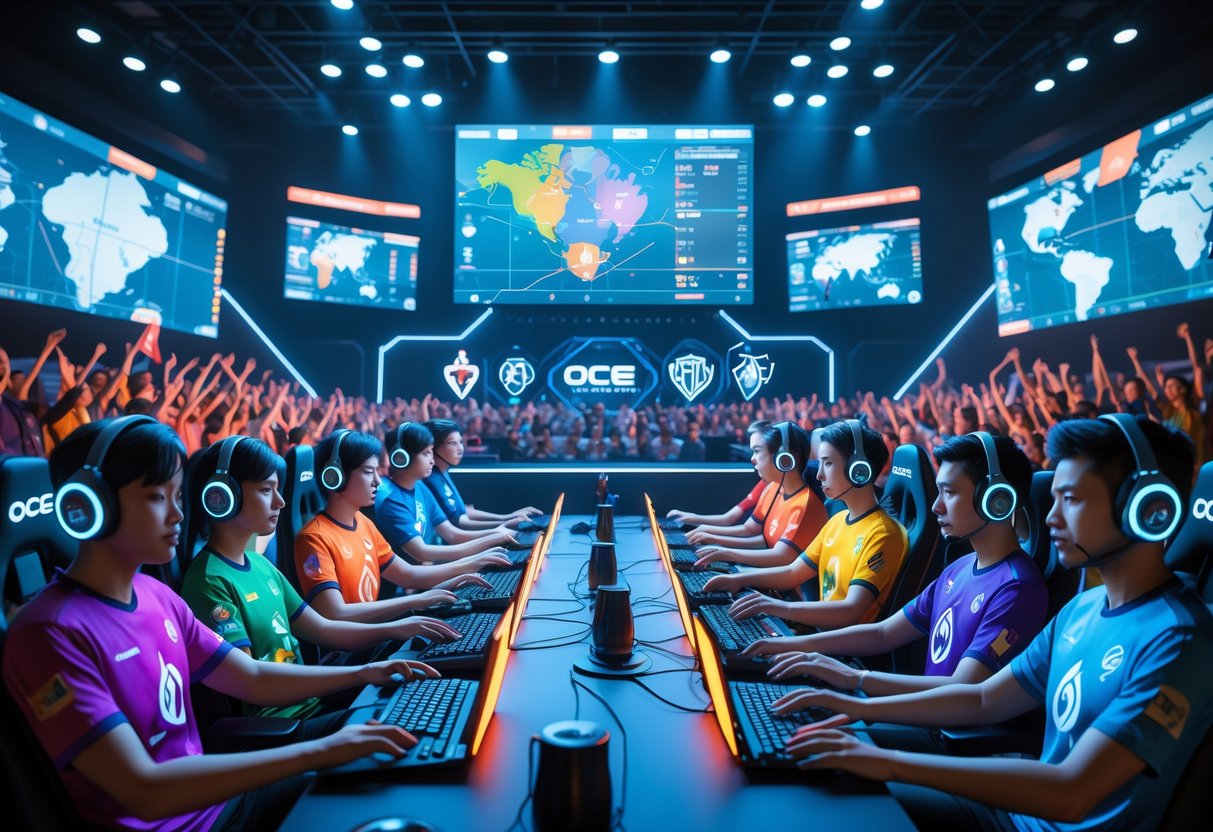
Despite all the hurdles, OCE has produced players who’ve made a real impact on the world stage. These players built strong foundations locally and inspired the next wave of competitive gamers.
Recognising Top Performers
OCE has grown skilled players in several esports. Many have found success even with fewer resources and less high-stakes competition than other regions.
Fortnite has had strong OCE showings. Quite a few players qualified for World Cup events and major tournaments, battling global talent despite higher ping.
League of Legends produced OCE stars through the old Oceanic Pro League (OPL). Teams like Legacy Esports and ORDER made it to Worlds.
Counter-Strike players from OCE joined international teams. Some moved overseas for bigger prize pools and more events.
Top OCE players often face a tough choice. They can stick around at home with limited opportunities or move to regions with better infrastructure.
Contributions to International Events
OCE teams have gone to major world championships in several games. Their results have been mixed, but they’ve improved over time.
At League of Legends Worlds, OCE teams usually get tough groups. Still, they’ve pulled off memorable wins against bigger regions. Those upsets prove OCE talent can hang with the best.
Fortnite World Cup events included OCE players like Volx, who competed in New York and took home solid prize money and global attention.
OCE Counter-Strike teams have played at international LANs. Results vary, but the experience helps local players and gives them a taste of top-level play.
OCE’s international impact isn’t just about wins or losses. Players bring unique strategies and playstyles shaped by their isolated scene.
Encouraging New Talent
Established OCE players support new talent through coaching and mentorship. Many stream regularly and share their knowledge with up-and-comers.
Grassroots tournaments are still key for talent growth. Local organisers host events that give new players real competition. Pros often join as guests or commentators.
Content creation is another path. Plenty of OCE players build audiences on streaming platforms and YouTube. This lets them earn money without leaving home.
Some teams run academy systems. Organisations like ORDER help promising players climb through their ranks.
The OCE community is tight-knit compared to bigger regions. New players can actually connect with pros and get advice. This mentorship keeps competitive standards up even when resources are thin.
Broader Implications for the Global Esports Landscape
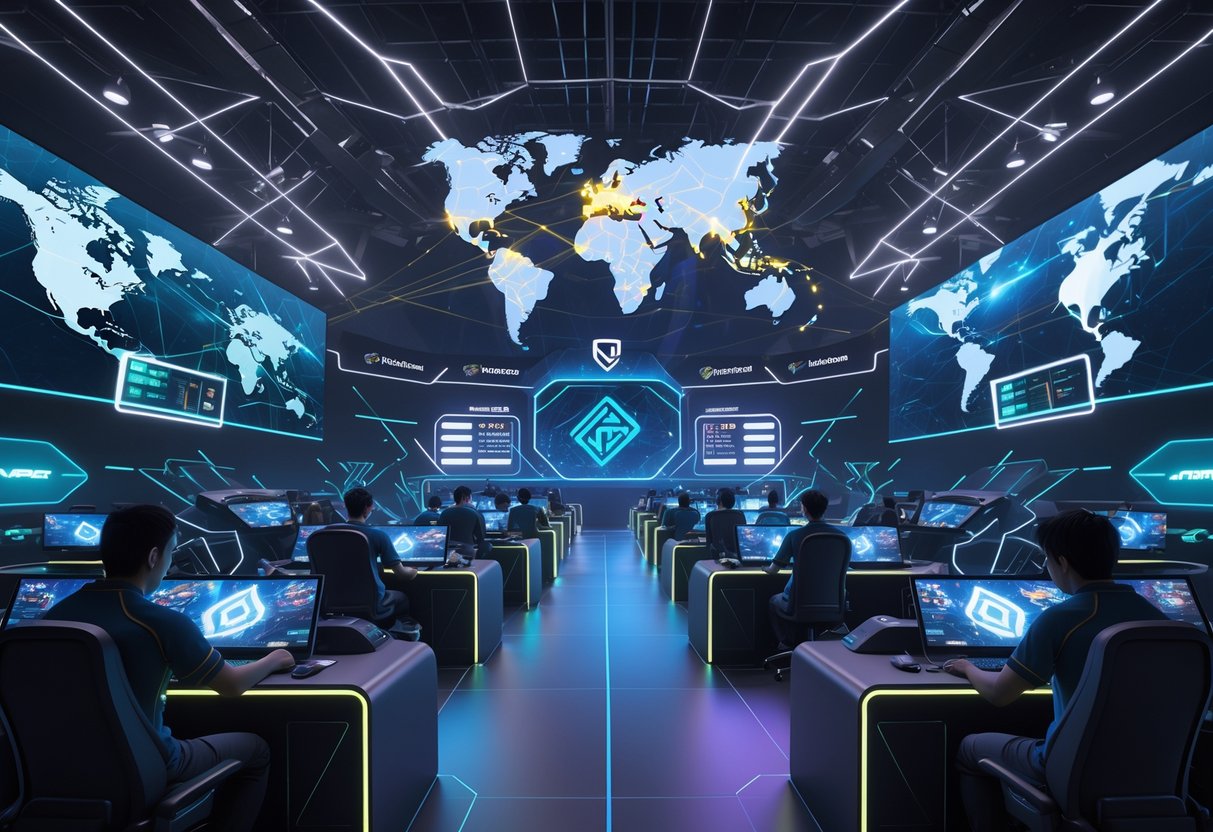
OCE’s competitive issues teach lessons that go way beyond just this region. The struggles in Oceania highlight patterns around regional development, talent retention, and infrastructure needs that other up-and-coming markets should notice.
OCE’s Role in Worldwide Esports
OCE acts as a kind of test case for how smaller regions compete globally. Even with a smaller population than NA, EU, or Asia, the region keeps producing world-class players.
Players like Legacy from League of Legends and various CS2 pros have shown OCE can play at the top. Most of the best eventually move to NA or EU for better opportunities, though.
The region works as a talent pipeline for bigger markets. OCE develops players but doesn’t always keep them.
OCE tournaments often try out new formats because of their smaller player pools. Sometimes, these experiments end up influencing global events.
The region’s timezone is handy too. Broadcasters use OCE tournaments to fill in the hours between major NA and EU events, which keeps esports coverage running around the clock.
Learning from OCE’s Challenges
OCE’s struggles highlight issues that hit all smaller esports regions. The prize pool gap between OCE and major regions shows how money (or the lack of it) shapes competition.
Infrastructure problems in OCE look a lot like those in SEA and smaller EU markets. Bad internet and not enough venues make things tough, which other regions should try to fix early.
Getting sponsors is especially tough for OCE teams. Australian companies haven’t jumped into esports as quickly as those in NA or EU, so funding is a problem.
With a small player base, there aren’t many chances to go pro. This talent concentration issue affects not just players, but also coaches, broadcasters, and support staff.
Being so far away makes travel to international events expensive and complicated.
Shaping International Best Practices
OCE’s experiences shape global policy in major esports organisations. Riot Games, for example, has tweaked their regional support after seeing what happened in OCE’s League of Legends scene.
The region’s remote competition innovations—born out of necessity—have helped other regions run online tournaments. COVID-19 sped up the adoption of OCE’s remote broadcasting ideas.
OCE’s approach to grassroots development is a solid model for other smaller regions. Local tournaments and sponsorships work well even with limited resources.
International tournament organisers now think about OCE’s timezone and infrastructure needs when planning global events. This has improved regional qualification systems.
The region’s talent development programmes also influence how teams in SEA and emerging European markets build player pathways.
Frequently Asked Questions
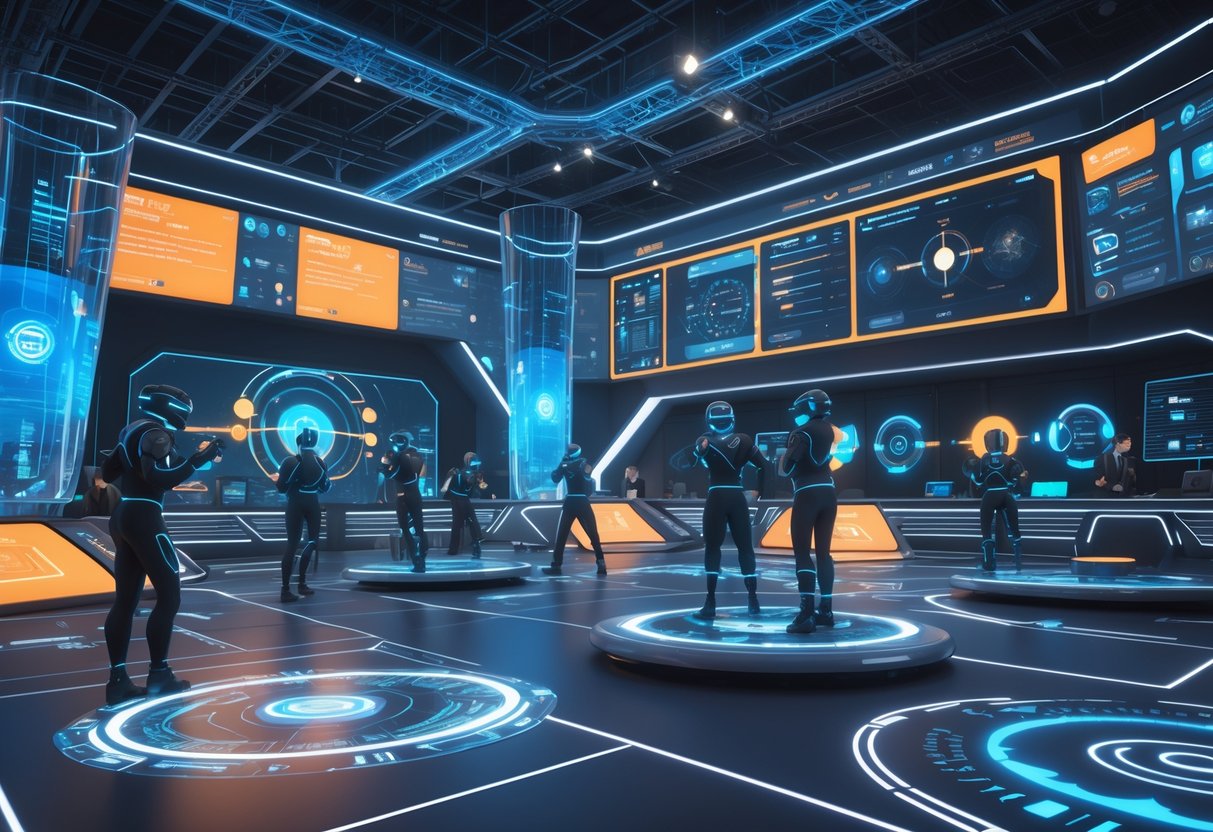
Oceania players deal with some unique headaches—server locations, weird time zones, and regional competition quirks. If you want to get ahead in the OCE scene, you’ve got to know your ranking systems, training methods, and tournament requirements.
How can I improve my ranking in OCE competitive gaming events?
Forget about chasing flashy plays every match. If you want to climb, focus on solid fundamentals and consistency.
Try to play during peak OCE hours. Usually, that’s evenings—think 6-10 PM AEST—since that’s when you’ll run into the best competition.
Take some time each week to review your match replays. Most games have replay systems, and honestly, just 30 minutes spent analyzing your losses can show you patterns you’d miss in the heat of the moment.
Find a reliable team or at least a duo partner. Solo queue only gets you so far, and teamwork really starts to matter as you move up.
What are the common strategies used in top-tier OCE competitive play?
Map control comes first in most OCE strategies. Teams like to hold key areas instead of rushing for quick eliminations.
Communication in OCE is a bit different than other regions. Players here stick to short, direct callouts because the pace is fast and there’s not much time to waste.
At the top level, resource management often wins games. Whether it’s economy rounds, ultimates, or power weapons, managing your resources usually matters more than just raw aim.
Could you suggest effective ways to train for OCE competitive challenges?
Kick off each session with 30 minutes of aim training or mechanical drills. Building muscle memory takes time—consistency beats grinding for hours.
Try dedicating certain days to certain skills. Maybe Monday is for mechanics, Wednesday is strategy review, and Friday goes to team practice.
Use aim trainers like Kovaak’s or Aim Lab every day. Even 15 minutes before ranked matches can sharpen your aim.
Watch POV streams from top OCE players in your main title. Don’t just watch the highlights—pay attention to their choices and how they handle tough spots.
Try to scrim against teams a bit better than yours. It’s tempting to face even opponents, but you’ll grow more by pushing yourself.
What are the requirements to participate in OCE regional competitions?
Most tournaments ask you to verify your server region. You’ll need an account with a real OCE server history, not just a changed location in your settings.
Age limits depend on the event. Some let in players as young as 13, but others need you to be 16 or even 18.
You’ll have to register your team 2-4 weeks before the big events. Make sure everyone has verified accounts and that you’ve picked a team name.
There’s usually a minimum rank to enter. Most events start around Diamond rank or whatever’s equivalent in your game.
Can you tell me about the recent changes to the rules in OCE competitive events?
Tournament formats now use double elimination brackets. Teams get a second chance, and grand finals end up way more intense.
Events have moved to standardized server settings for all OCE competitions. This cuts down on technical arguments and keeps things fair.
Prize pools get split more evenly these days. Instead of one team taking everything, the top 4-8 squads usually walk away with something worthwhile.
Anti-cheat rules have gotten a lot stricter. Most tournaments make you run kernel-level anti-cheat and verify your hardware ID.
Where can I find a reliable schedule for upcoming OCE competitive tournaments?
Liquipedia actually has some of the best tournament calendars out there for major esports titles. They update their OCE sections every day, tossing in new events and fixing up schedules as things shift.
You’ll also find that official game developers share regional schedules on their esports websites. Riot Games, Valve, and Blizzard usually drop OCE-specific tournament calendars every quarter.
If you haven’t already, jump into Discord servers for your favorite competitive games. You’ll often catch wind of community-run tournaments there before anyone posts them publicly—sometimes weeks ahead.
It’s worth following big OCE esports orgs on social media, too. Teams like ORDER and Legacy Esports tend to share tournament announcements and info about qualifications pretty regularly.

